Products
-
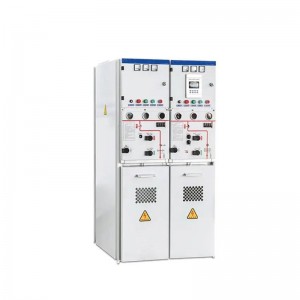
ZMG-12 Solid Insulation Ring Network Switchgear
ZMG-12 series solid insulation closed ring network switchgear is a fully insulated, fully sealed, maintenance-free solid insulation vacuum switchgear. The high-voltage live parts are cast and molded with epoxy resin materials with excellent insulating properties, which organically combine the vacuum interrupter, the main conductive circuit, and the insulating support into a whole, and the functional units are connected by fully insulated solid bus bars. Therefore, the entire switchgear is not affected by the external environment, which can ensure the reliability of equipment operation and the safety of operators.
-

XGN66-12 Box-Type Fixed Metal-Enclosed Switchgear
XGN66-12 box-type fixed AC metal-enclosed switchgear (hereinafter referred to as switchgear) is suitable for receiving and distributing electric energy in 3.6~kV three-phase AC 50Hz system as a device for receiving and distributing electric energy, suitable for places with frequent operations and equipped with oil switches. Switchgear transformation. The busbar system is a single busbar system and a single busbar segmented system.
-
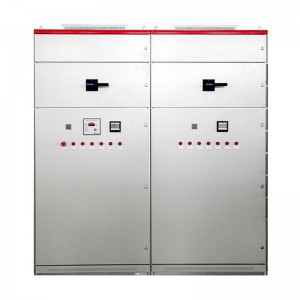
MSCLA Low Voltage Reactive Power Automatic Compensation Device
MSCLA type low-voltage reactive power automatic compensation device is based on the reactive load condition of the distribution transformer, and automatically switches the capacitor bank connected in parallel with the distribution transformer 1kV and below busbar in steps to provide the corresponding capacitive reactive power and compensate the inductive reactive power. power, improve the power factor, stabilize the system voltage, thereby reducing the line loss, increasing the transmission capacity of the transformer, and improving the overall power transmission efficiency. At the same time, it has the function of load monitoring, which can monitor the operation status of the power grid in real time, and realize the combination of reactive power compensation and power distribution monitoring. This series of low-voltage reactive power automatic compensation device is one of the leading products of our company, with mature design level and production technology.
The device consists of parallel capacitors, series reactors, arresters, switching equipment, control and protection devices, etc. It is mainly used in AC power systems with large load fluctuations of 1kV and below.
-
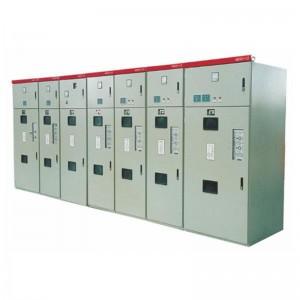
HXGH-12 Box-Type Fixed Ac Metal-Enclosed Switchgear
HXGN-12 box-type fixed metal-enclosed switchgear (referred to as ring network cabinet) is a complete set of AC high-voltage electrical devices with a rated voltage of 12KV and a rated frequency of 50HZ. It is mainly used for three-phase AC ring network, terminal distribution network and industrial electrical equipment. It is also suitable for loading into box-type substations for receiving, distributing electrical energy and other functions. The ring network cabinet is equipped with manual and electric spring mechanisms to operate the load switch, and the earthing switch and isolation switch are equipped with manual operating mechanisms. It has strong complete set, small size, no fire and explosion hazard, and reliable “five-proof” function.
HXGN-12 box-type fixed metal-enclosed switchgear is a new generation of high-voltage electrical products that digests and absorbs foreign advanced technology and combines my country’s power supply requirements. The performance conforms to the standards of IEC298 “AC metal-enclosed switchgear and control equipment” and GB3906 “3~35kV AC metal-enclosed switchgear”. It is suitable for power distribution systems with three-phase AC, system voltage of 3~12kV, and rated frequency of 50Hz, such as factories, schools, residential quarters, and high-rise buildings.
-
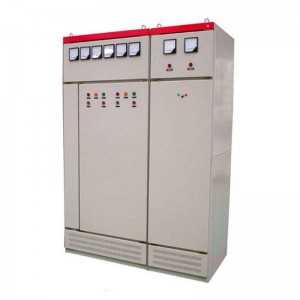
GGD Type Ac Low Voltage Distribution Cabinet
GGD type AC low-voltage power distribution cabinet is suitable for power distribution systems with AC 50HZ, rated working voltage 380V, and rated working current up to 3150A. , distribution and control purposes. The product has the characteristics of high breaking capacity, good dynamic and thermal stability, flexible electrical scheme, convenient combination, strong practicability, novel structure and high protection level. It can be used as a replacement product for low-voltage switchgear.
This product complies with IEC439 “Low-voltage switchgear and control equipment” and GB7251 “Low-voltage switchgear” and other standards.
-
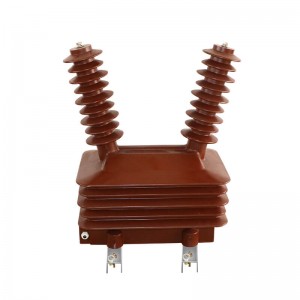
Single-Phase Fully Enclosed And Fully Insulated Casting Voltage Transformer
Product Category: Voltage Transformer Overview: This product is an outdoor epoxy resin casting insulation fully enclosed, fully industrial.
It is suitable for outdoor AC 50-60Hz, rated voltage 35kV power system for voltage, electric energy measurement and relay protection.
-

JDZW2-10 Voltage Transformer
This type of voltage transformer is a pillar-type structure, which is fully enclosed and poured with outdoor epoxy resin. It has the characteristics of arc resistance, ultraviolet resistance, aging resistance, and long life. Because the transformer adopts fully enclosed casting insulation, it is small in size and light in weight, and is suitable for installation in any position and in any direction. The secondary outlet end is provided with a wiring protection cover, and there are outlet holes below it, which can realize anti-theft measures. Safe and reliable, there are 4 mounting holes on the base channel steel.
-

JDZ-35KV Indoor Epoxy Resin Voltage Transformer
This product is suitable for indoor 33kV, 35kV, 36kV, AC system metering and protection.
The product can be used independently or installed in complete sets of cabinets and substations.
The current transformer adopts high-voltage epoxy resin, imported silicon steel sheet iron core, the winding adopts high-insulation enameled copper wire, and the winding and iron core are treated with high-quality semiconductor shielding paper.
-
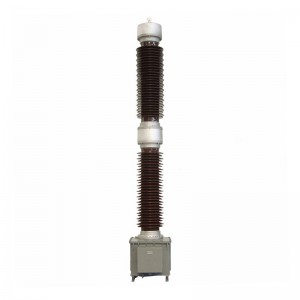
220kV Capacitive Voltage Transformer
Product Usage
Outdoor single-phase capacitive voltage transformers are used for voltage, energy measurement and relay protection in 35-220kV, 50 or 60 Hz power systems. Its capacitive voltage divider doubles as a coupling capacitor for power line carrier communications.
-

110kV Oil Immersion Outdoor Inverted Current Transformer
Product Usage
Outdoor single-phase oil-immersed inverted current transformer, used for current, energy measurement and relay protection in 35~220kV, 50 or 60Hz power systems.
-
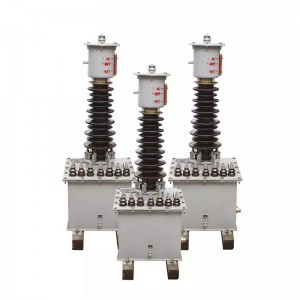
5KV Single-Phase Oil-Immersed Voltage Transformer
This series of voltage transformers/oil-immersed transformers are single-phase oil-immersed products. It is used for electric energy metering, voltage control and relay protection in power systems with rated frequency of 50Hz or 60Hz and rated voltage of 35KV.
-

Power Arrester
Function
The arrester is connected between the cable and the ground, usually in parallel with the protected equipment. The arrester can effectively protect the communication equipment. Once an abnormal voltage occurs, the arrester will act and play a protective role. When the communication cable or equipment is running under normal working voltage, the arrester will not work, and it is regarded as an open circuit to the ground. Once a high voltage occurs and the insulation of the protected equipment is endangered, the arrester will act immediately to guide the high-voltage surge current to the ground, thereby limiting the voltage amplitude and protecting the insulation of communication cables and equipment. When the overvoltage disappears, the arrester quickly returns to its original state, so that the communication line can work normally.
Therefore, the main function of the arrester is to cut the invading flow wave and reduce the overvoltage value of the protected equipment through the function of the parallel discharge gap or the nonlinear resistor, thereby protecting the communication line and equipment.
Lightning arresters can be used not only to protect against high voltages generated by lightning, but also to protect against operating high voltages.













